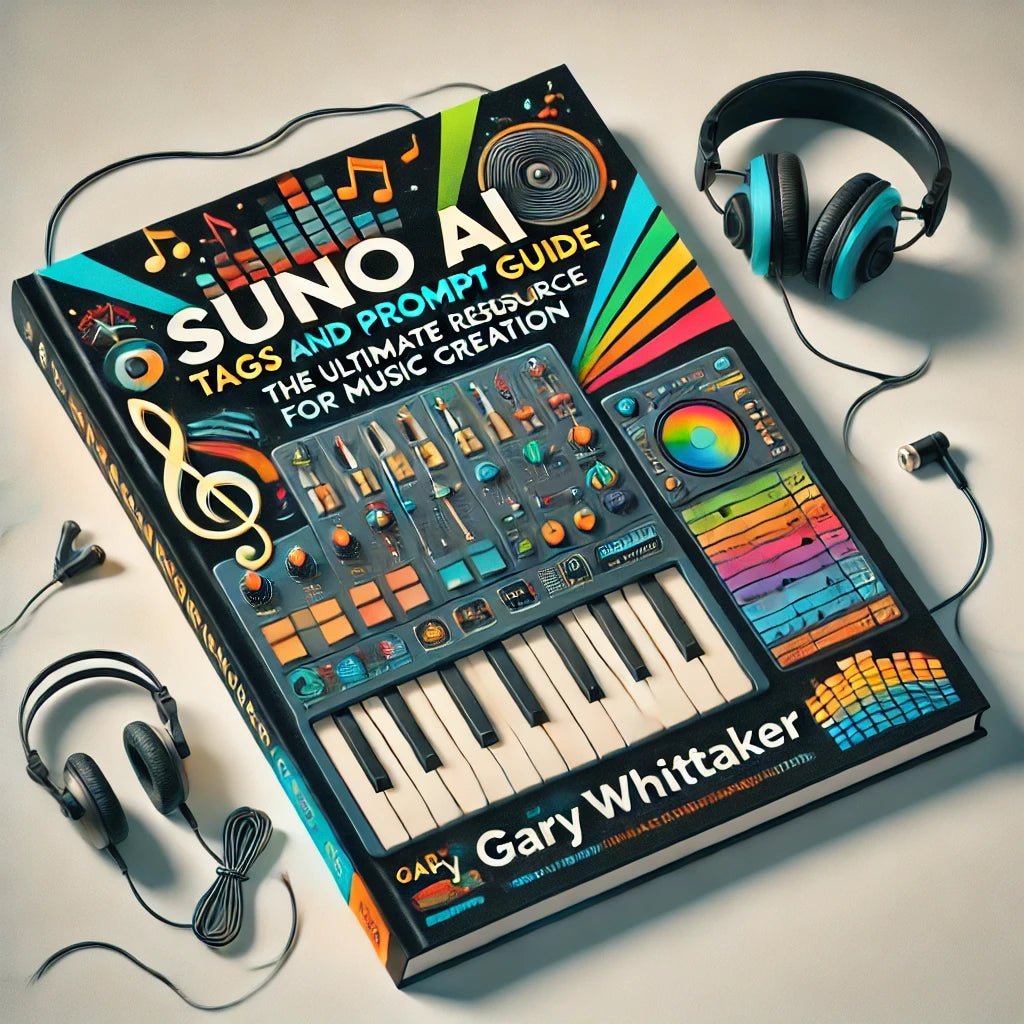Creating music has never been more accessible. Vocaloid software lets you produce songs with virtual singers.
Vocaloid is a powerful tool for music creators. It offers endless possibilities for composing unique tracks. This guide will help you understand and use Vocaloid software. Whether you're a beginner or an experienced musician, this guide has something for you.
Learn how to select the best Vocaloid voice bank for your genre. Discover tips for writing engaging lyrics and melodies. Understand how to mix and master your tracks for a polished sound. Dive into the world of Vocaloid and unleash your creativity. Let's explore the features and benefits of this amazing music software.
Introduction To Vocaloid
Welcome to the Ultimate Guide to Creating Music With Vocaloid Software. This guide will walk you through the basics and advanced techniques of using Vocaloid. Let's start with an Introduction to Vocaloid that will give you a solid foundation.
What Is Vocaloid?
Vocaloid is a singing voice synthesizer software. It allows users to create songs using pre-recorded vocals. These vocals are from voice actors or singers. You can control various aspects of the voice. This includes pitch, tone, and speed.
Vocaloid software is popular among music creators. It helps them produce songs without needing a human singer. This makes it a great tool for anyone interested in music production.
History And Evolution
The history of Vocaloid started in the early 2000s. Yamaha Corporation developed the first version. It was launched in 2004. The software has evolved greatly since then. Each new version adds more features and improves the quality of the voices.
Let's look at the evolution of Vocaloid through different versions:
| Version | Release Year | Key Features |
|---|---|---|
| Vocaloid 1 | 2004 | Basic voice synthesis |
| Vocaloid 2 | 2007 | Improved voice quality, easier user interface |
| Vocaloid 3 | 2011 | Support for multiple languages, better control |
| Vocaloid 4 | 2014 | Real-time pitch control, growl feature |
| Vocaloid 5 | 2018 | Enhanced user interface, more voicebanks |
Each version of Vocaloid brought new innovations. It made the software more user-friendly and versatile. The latest version, Vocaloid 5, offers a seamless experience. It provides a wide range of voicebanks and tools.
Understanding the history and evolution of Vocaloid helps in appreciating its development. It shows how far the technology has come and its potential for future growth.
Choosing Your Vocaloid Software
Choosing the right Vocaloid software is crucial for your music creation journey. With several options available, it's important to pick one that suits your needs. This section will guide you through some popular Vocaloid programs and key features to consider.
Popular Vocaloid Programs
There are many Vocaloid programs to choose from, each with its unique features. Here are a few popular ones:
- Vocaloid by Yamaha: The original software, known for its wide range of voices and styles.
- UTAU: A free alternative that allows for custom voicebanks.
- Synthesizer V: Known for its high-quality vocal synthesis and user-friendly interface.
- CeVIO: Offers both singing and speaking voice synthesis, making it versatile.
Key Features To Consider
When choosing a Vocaloid software, consider these key features:
- Voicebank Variety: Look for a program with a wide range of voicebanks. This allows for more creative freedom.
- User Interface: A simple and intuitive interface can make the creation process smoother.
- Compatibility: Ensure the software is compatible with your operating system and other music production tools.
- Sound Quality: High-quality sound is essential for professional-sounding music.
- Cost: Consider your budget. Some programs offer free versions or trials.
By considering these features, you can select the best Vocaloid software for your needs.
Setting Up Your Software
Creating music with Vocaloid software is an exciting journey. But before you dive into composing, you need to set up your software correctly. This section will guide you through the initial steps to get your Vocaloid software up and running smoothly.
Installation Steps
Start by purchasing the Vocaloid software from an official source. Download the installation file to your computer. Follow these steps:
- Double-click the downloaded file to start the installation.
- Read and accept the end-user license agreement.
- Choose the destination folder for the installation.
- Click “Install” and wait for the process to complete.
- Once installed, launch the Vocaloid software.
Ensure your computer meets the software's system requirements for smooth operation. A stable internet connection is necessary for activation.
Initial Configuration
After installation, configure your Vocaloid software to suit your needs. Follow these steps:
- Open the software and navigate to the settings menu.
- Select your preferred language for the interface.
- Adjust the audio settings for optimal sound quality.
- Connect your MIDI keyboard, if available, for easier composition.
- Update the software to the latest version for new features and bug fixes.
Personalize the software by setting up user profiles. Save your settings to avoid reconfiguration later.
| Step | Description |
|---|---|
| Language | Choose the preferred language for the interface. |
| Audio Settings | Adjust settings for optimal sound quality. |
| MIDI Connection | Connect your MIDI keyboard for easier composing. |
| Software Update | Update to the latest version for new features. |
Proper configuration ensures that you make the most of the Vocaloid software. Happy composing!
Creating Your First Song
Creating your first song with Vocaloid software can be exciting and rewarding. This guide will help you through the essential steps. Let’s dive into writing lyrics and composing the melody.
Writing Lyrics
Start by brainstorming ideas for your song's theme. Think about what message or story you want to convey. Write down key phrases or words related to your theme.
Next, structure your lyrics. A common structure is:
- Verse
- Chorus
- Verse
- Chorus
- Bridge
- Chorus
Keep your lyrics simple and clear. Use short sentences and easy words. Aim for emotional impact and relatability. Remember, Vocaloid software can handle complex lyrics, but clarity is key for listeners.
Composing The Melody
Now, it's time to compose the melody. Start by choosing a key and tempo that match your song's mood. Use a digital audio workstation (DAW) to create the instrumental track. You can use MIDI instruments to lay down the basic chords and rhythm.
Next, create a melody line for your lyrics. Play around with different notes and rhythms until you find something that fits well. Use the Vocaloid software to input your melody and assign it to the vocal track.
Adjust the pitch, timing, and dynamics of each note to ensure the melody sounds natural. Experiment with different vocal styles and effects to enhance your song's uniqueness.
| Step | Description |
|---|---|
| 1. Choose a Key | Select a key that suits your song's emotion. |
| 2. Set the Tempo | Decide on a tempo that matches the mood. |
| 3. Create Instrumental Track | Use MIDI instruments to build the foundation. |
| 4. Compose Melody | Write a melody line that fits your lyrics. |
| 5. Input into Vocaloid | Assign the melody to the vocal track. |
| 6. Adjust and Experiment | Fine-tune pitch, timing, and dynamics. |
With these steps, you are well on your way to creating your first song with Vocaloid software. Happy composing!
Advanced Techniques
Creating music with Vocaloid software can be a fun and creative process. Once you have the basics down, it's time to explore advanced techniques. These techniques help you make your Vocaloid tracks sound more professional. Let's dive into two key areas: voice tuning and adding emotional expression.
Voice Tuning Tips
Voice tuning is crucial for a polished sound. Start by adjusting the pitch of each note. This ensures that the Vocaloid sings in tune. Use the pitch bend tool for smooth transitions between notes.
Pay attention to the timing. Make sure the Vocaloid sings at the right moment. Use the timing adjustment tool to align the vocals with the music.
Experiment with vibrato. Add vibrato to longer notes for a natural feel. Adjust the depth and speed of the vibrato to fit the mood of the song.
Adding Emotional Expression
Emotional expression makes your Vocaloid tracks more engaging. Adjust the dynamics to convey different emotions. Use volume changes to highlight important parts of the song.
Change the tone of the voice. A softer tone can convey sadness, while a stronger tone can show excitement. Use the tone adjustment tool to tweak the character's voice.
Experiment with breath sounds. Add breaths to make the singing more realistic. Use the breath control tool to insert breaths at the right moments.
Try different vocal effects. Reverb and echo can add depth to the vocals. Use the effects settings to enhance the overall sound.

Credit: www.amazon.com
Integrating Vocaloid With Other Software
Integrating Vocaloid with other software can elevate your music production. Combining Vocaloid with a Digital Audio Workstation (DAW) or adding effects can enhance your creative process. This section will explore how to integrate Vocaloid with other tools to create professional-sounding music.
Using Daws
Digital Audio Workstations (DAWs) are essential for music producers. They provide a platform to record, edit, and produce music. Popular DAWs include FL Studio, Ableton Live, and Logic Pro. Integrating Vocaloid with these DAWs can streamline your workflow.
Here is a simple guide to integrate Vocaloid with a DAW:
- Open your DAW and create a new project.
- Insert a new instrument track and select Vocaloid as the instrument.
- Compose your melody directly in the DAW, or import a MIDI file.
- Edit the Vocaloid track using the DAW's interface.
Using a DAW, you can easily control Vocaloid's parameters and automate changes. This allows for precise adjustments and a more polished final product.
Adding Effects And Instruments
To enhance your Vocaloid tracks, consider adding effects and instruments. Effects like reverb, delay, and EQ can make the vocal sound more natural. Instruments can provide a fuller, richer sound.
Here are some common effects to use:
- Reverb: Adds space and depth to the vocal.
- Delay: Creates an echo effect, adding complexity.
- EQ (Equalization): Balances the vocal frequencies.
- Compression: Controls the dynamic range of the vocal.
Instruments such as pianos, guitars, and drums can be added to complement the vocal. This combination creates a more engaging and dynamic track.
Follow these steps to add effects and instruments:
- Select the Vocaloid track in your DAW.
- Insert an effect plugin on the track.
- Adjust the effect parameters to suit your needs.
- Add instrument tracks and compose accompanying parts.
Experiment with different combinations to find what works best for your music. Integrating Vocaloid with other software opens up endless creative possibilities.
Publishing And Sharing Your Music
Publishing and sharing your music can be an exciting step. After putting in the hard work, you'll want others to hear your creations. Vocaloid software offers various ways to export and promote your music. This section will guide you through the process.
Exporting Your Tracks
First, ensure your track is complete and sounds the way you want. Then, navigate to the export options within the Vocaloid software. Select the format that best suits your needs. Common formats include MP3, WAV, and FLAC. MP3 files are great for online sharing. WAV files are uncompressed and offer higher quality. FLAC files are also high quality but take up less space than WAV.
Promoting On Social Media
Sharing your music on social media can help you reach a wider audience. Create a short and engaging post about your new track. Include a link to where people can listen to or download your music. Use eye-catching visuals to attract attention. Join music-related groups and communities to share your work. Engage with your audience by responding to comments and feedback. Consistent posting can keep your audience interested in your music.

Credit: makebeats101.com
Troubleshooting Common Issues
Troubleshooting common issues is a crucial part of creating music with Vocaloid software. Running into technical problems can be frustrating, but knowing how to solve them can save you time and keep your creativity flowing. This guide will help you address some of the most common issues you might face.
Solving Technical Problems
Technical problems can arise anytime. Here are some common issues and their solutions:
- Software Crashes: Make sure your computer meets the system requirements. Update your Vocaloid software and all related drivers.
- Audio Issues: Check your audio settings. Ensure your speakers or headphones are properly connected. Update your audio drivers.
- Lagging or Freezing: Close unnecessary applications. Increase your computer’s RAM or optimize your system's performance settings.
Getting Help From The Community
The Vocaloid community is a great resource for troubleshooting. Here are some ways to get help:
- Join Vocaloid forums. Ask questions and share your experiences.
- Watch tutorial videos. Many experienced users share their tips and tricks.
- Follow Vocaloid social media groups. Stay updated with the latest news and solutions.
If you encounter persistent issues, don’t hesitate to reach out to the Vocaloid support team. They are there to help you resolve any problems.
Future Trends In Vocaloid
The Vocaloid software continues to evolve, offering exciting new possibilities for music creation. As technology advances, new trends emerge, promising to enhance the Vocaloid experience. This section explores the future trends in Vocaloid, including upcoming software features and the future of virtual vocalists.
Upcoming Software Features
The future of Vocaloid software looks bright with several innovative features on the horizon. These updates aim to make the software more user-friendly and versatile. Let's explore some of the upcoming features:
- Improved Voice Synthesis: New algorithms will create more natural and expressive voices.
- Enhanced User Interface: A more intuitive design will simplify the creative process.
- Real-time Editing: Edit vocal tracks in real-time for faster workflow.
- AI Integration: Advanced AI will assist in generating melodies and harmonies.
- Cloud Collaboration: Collaborate with other users online seamlessly.
These features will make it easier for both beginners and experienced users to create high-quality music with Vocaloid.
The Future Of Virtual Vocalists
Virtual vocalists are becoming more popular in the music industry. Future trends suggest that these digital singers will become even more lifelike and versatile. Here are some trends to watch:
- Customizable Voices: Users will be able to create unique vocal characters.
- Multilingual Support: Virtual vocalists will sing fluently in multiple languages.
- Interactive Performances: Virtual singers will interact with audiences in real-time.
- Cross-Platform Integration: Seamless integration with other music production tools.
- Advanced Emotional Expression: Virtual vocalists will convey a wider range of emotions.
These trends indicate a promising future for virtual vocalists, offering more creative options for musicians and producers.

Credit: lyricassistant.com
Frequently Asked Questions
What Is Vocaloid Software?
Vocaloid software is a voice synthesizer that allows users to create singing vocals. It uses pre-recorded voice samples from various voicebanks.
How Do You Start With Vocaloid?
To start with Vocaloid, install the software and download a voicebank. Follow tutorials to learn the basics.
Can Beginners Use Vocaloid?
Yes, beginners can use Vocaloid. The software is user-friendly, and many tutorials are available online.
What Are Vocaloid Voicebanks?
Vocaloid voicebanks are pre-recorded voice samples. Each voicebank has a unique voice character and tone.
Conclusion
Creating music with Vocaloid software is fun and rewarding. Start with basic features. Experiment with different voices. Develop your unique style. Practice regularly. Each song gets better. Share your music online. Join Vocaloid communities. Learn from others. Keep exploring new techniques.
Enjoy the creative journey. Your music will inspire others. Happy composing!









